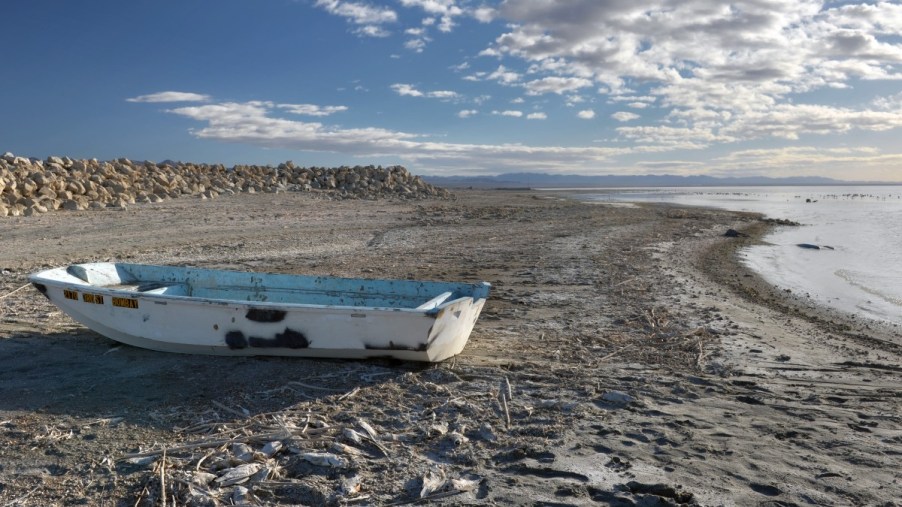
Toxic California Lake Has Lithium to Power EVs for Decades, Make US Less China-Dependent
Lithium is essential for the production of electric cars. Battery packs in EVs utilize the metal element. Also, lithium is the lightest naturally occurring metal element, which helps keep the weight down for electric vehicles. However, there is a limited supply of lithium, and the United States is highly dependent on other countries to obtain it. Much of the lithium supply is extracted in an environmentally harmful way from the salt flats of Chile, Argentina, and Bolivia. Also, most of the lithium processing is in China. However, there might be a solution: a toxic lake in California, which has enough lithium to power EVs for decades.
Massive supply of lithium in California’s Salton Sea for use in electric cars

The Salton Sea, located in Southern California, around 40 miles north of the U.S.-Mexico border, is actually not a sea at all. It’s the largest lake in California and was once a thriving resort community. However, over the years, the water level of the Salton Sea significantly dropped. This left behind large barren stretches and desolate gray beaches. Also, toxic dust blows off of the lake. This causes health problems for the predominantly Mexican-American community.
However, far below the toxic lake lies a hidden treasure: a massive supply of lithium. As detailed by CNBC and CNN, the “California Energy Commission estimates that there’s enough lithium here to meet all of the United States’ projected future demand and 40% of the world’s demand.”
New technology to extract lithium from the Salton Sea in a more eco-friendly way
As currently extracted, lithium mining is very harmful to the environment. Using either extraction ponds or open-pit mines, miners pump lithium-containing brine to the surface. They then wait for it to dry up. Both of these lithium extraction methods use a considerable amount of water. These methods also often create a great deal of waste and contamination.
However, three companies are now developing chemical processes to extract lithium in a cleaner and more eco-friendly way. This new technology accomplishes this by utilizing the rich geothermal resources of the Salton Sea.

There are already 11 geothermal power plants operating near the lake, “10 of which are owned by Berkshire Hathaway’s renewable energy division, BHE Renewables.” Alicia Knapp, president and CEO of BHE Renewables, said, “We are already pumping 50,000 gallons of brine per minute across all of our 10 geothermal facilities to the surface, and we’re using the steam from that brine to generate clean energy. So we’re really halfway there in that we’ve got the lithium right here in our hands.”
In addition to BHE Renewables, “EnergySource and Controlled Thermal Resources (CTR) are developing joint geothermal-lithium facilities at the Salton Sea.” Also, General Motors made a commitment to source lithium from CTR.
Lithium mined from the Salton Sea for EVs could be an economic boon to the region
Along with helping power EVs for decades and reducing lithium dependency on China and other countries, the lithium mined from the Salton Sea could be an economic boon to the region. The majority Mexican-American community near the Salton Sea has a high level of unemployment. If the lithium mining ramps up, many new jobs will be created.
Maria Nava-Froelich, the mayor pro tem of Calipatria, California, said, “We’re cautiously excited in regards to the Lithium Valley. We see it as a game-changer here for Imperial County.” In addition to creating jobs, Nava-Froelich hopes that the new lithium industry will bring development to the region. She also believes it could “revitalize communities that have seen an exodus of young people seeking opportunities elsewhere.”
Furthermore, environmentalists hope that the increased money and media attention will quicken California’s efforts to restore the environment in the Salton Sea and the surrounding area.
The lithium in the Salton Sea holds much promise for the EV industry and the region. However, lithium extraction from geothermal brines is a new and untested technology. With this in mind, it remains to be seen if it will be effective and provide all of the potential benefits.
This article was updated on 7/11/2022.


